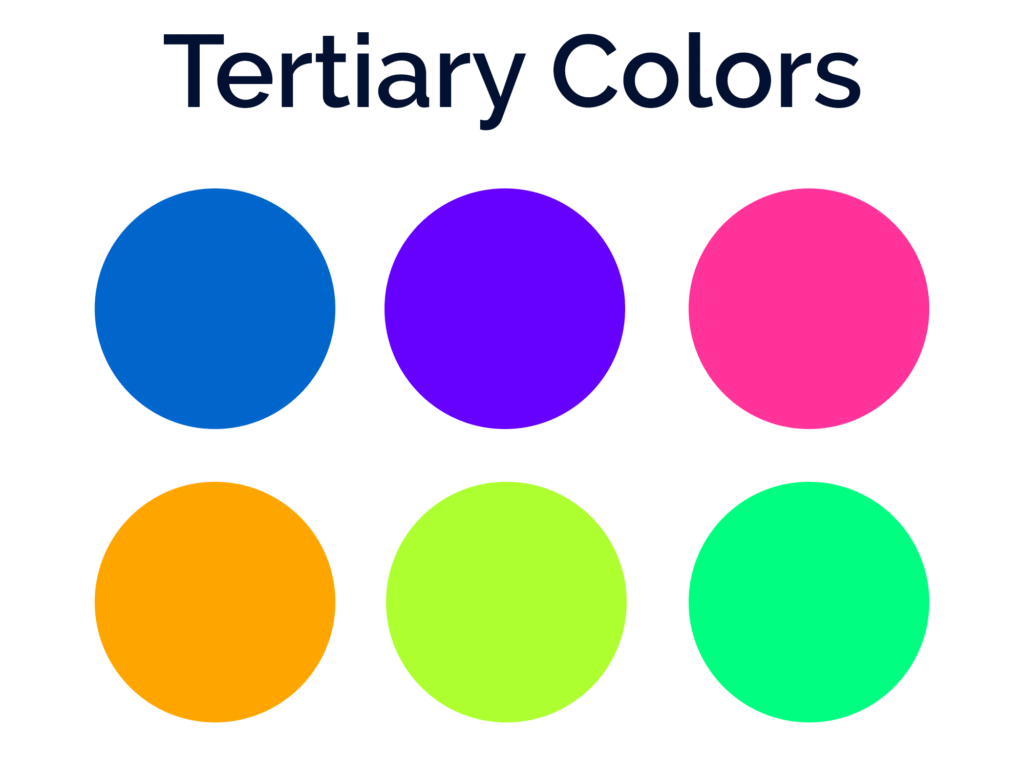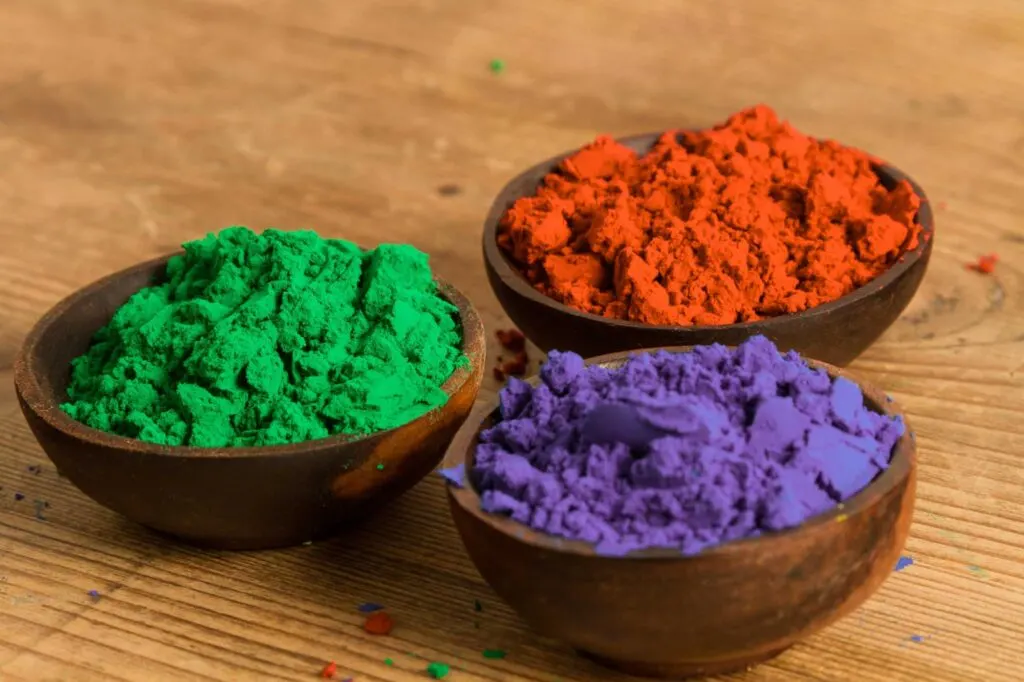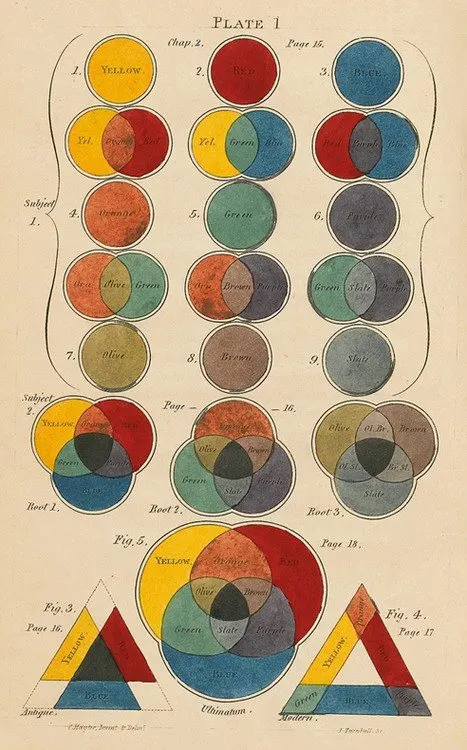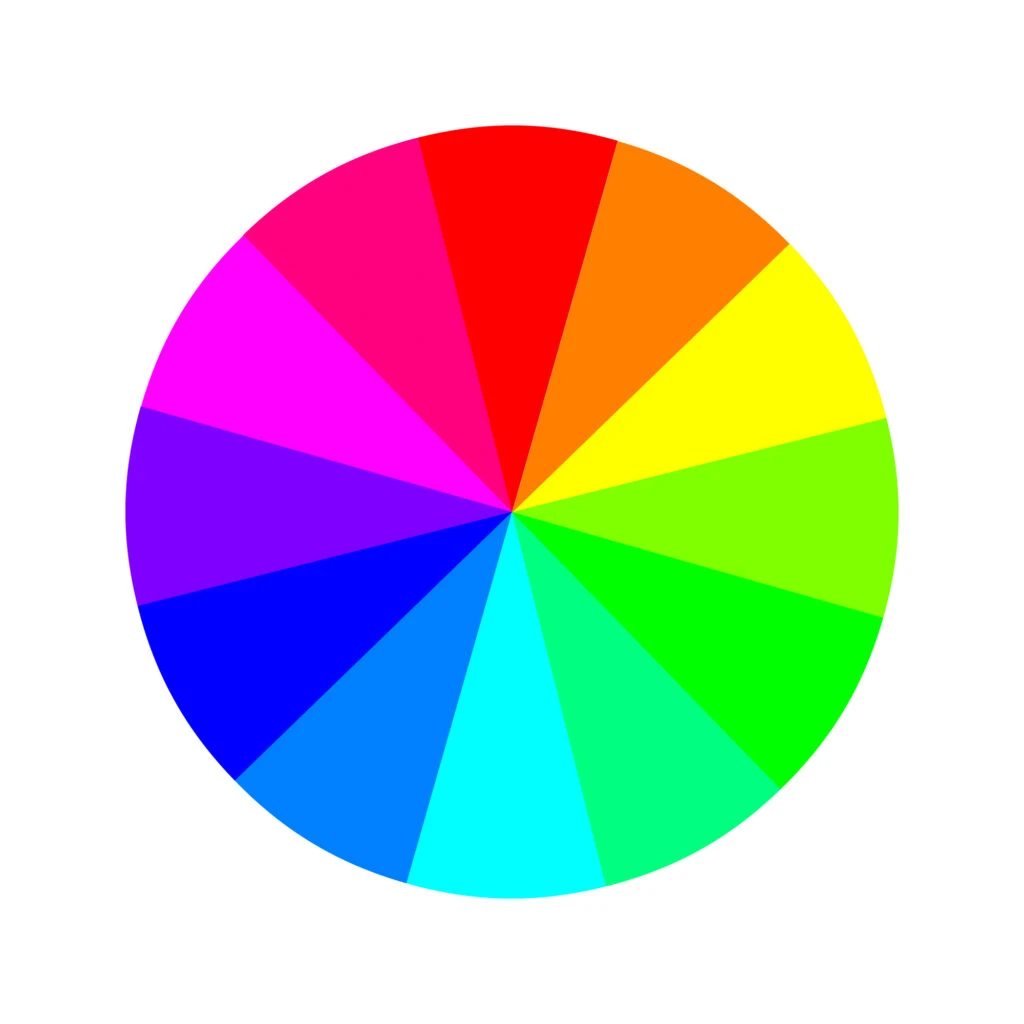Here’s everything you need to know about tertiary colors.
Tertiary colors are a complicated, but crucial part of the world of color. Depending on what color model you’re working with, they can behave and look very different.
In this post, we’ll explain how tertiary colors fit into the color wheel, provide examples of tertiary colors, and explain how they can take your designs to the next level.

Color Theory
Tertiary colors open up a new dimension of color theory. They provide access to a wider range of colors, expanding your palette.
Color theory is the reasoning we can use to talk about color and create guidelines for using it effectively. This makes it easier to work with the full rainbow and find harmonious color combinations.
In terms of color theory, tertiary colors are the ultimate level of complexity, giving you far more tools to play with and create eye-pleasing color schemes.
Primary and Secondary Colors
To understand tertiary colors, first, we need to have a firm grasp of primary and secondary colors. Here’s a quick primer to get you up to speed:
Primary Colors
These are the only colors that can’t be created by mixing other colors together, also known as pure colors. They’re the building block of all hues of the color spectrum.
In painting, these colors are red, yellow, and blue. When mixing pigments, the primary colors are cyan, magenta, and yellow. When mixing light, the primary colors are red, green, and blue.
Knowing these primary colors like the back of your hand is vital because starting with different primary colors affects what colors you can access and how.

Secondary Colors
Secondary colors consist of equal parts of two primary colors.
In painting, the secondary colors are orange, purple, and green. In mixing light, they’re cyan, magenta, and yellow. When mixing pigments, the secondary colors are red, green, and blue.
These are crucial to understanding before moving on to learning the tertiary colors.
Pssst: Color temperature is essential to create rich color schemes since every hue can be a warm color (or a cool color, for that matter).

What are the Tertiary Colors?
There are two definitions of tertiary colors, and therefore two different results for every color combination. What definition applies to your case will depend on what color model you’re using.
Definition #1: An Equal Mixture of Two Secondary Colors
This definition applies in painting, which uses the RYB color model (paint color). This concept varies from the other two color models.
By this definition, you can’t find tertiary colors on the color wheel. Nevertheless, they’re still important to know if you’re a painter and work with color mixing.
Examples of RYB Tertiary Colors:
- Slate (green + purple)
- Olive (green + orange)
- Brown (purple + orange)
Note that the tertiary colors in this model are more desaturated, neutral colors, and are quite different from the ones you’ve probably learned in art class in elementary school.

In this color model, each individual color between primaries and secondaries on the color wheel is known as intermediate color.
However, this same term is used interchangeably to describe tertiary colors in the RGB and CMYK models.
Definition #2: An Equal Mixture of a Primary and Secondary Color
This definition applies to mixing light (digital artists) and pigments (printing industry), which use the RGB and CMYK color models, respectively.
In these models, tertiary colors show up on the color wheel, so they’re easier to identify. Just check the color wheel between the primary and secondary colors.
Examples of RGB and CMYK Tertiary Colors:
- Chartreuse (green + yellow)
- Spring green (green + cyan)
- Azure (blue + cyan)
- Violet (blue + magenta)
- Rose (red + magenta)
- Orange (red + yellow)
Interestingly, the complementary colors of the tertiaries are other tertiary. So the complementary color of chartreuse is violet, spring green is rose, and azure is orange. Also, their analogous colors are always one primary and one secondary color.

The Benefits of Using Tertiary Colors in Design
Tertiary colors add a new layer of complexity. You might be thinking, “This seems like a headache to remember. What if I just avoid using them in my designs?”
While it’s true that it’s more information to grasp, tertiary colors are crucial in design. They add variety, contrast, and visual interest.
If you stick to primary and secondary colors, your color schemes will be very limited. Tertiary colors open up a whole other world of color that you won’t want to miss out on. They’re well worth the work to get to know.
Did you enjoy reading about the tertiary colors? Then share it with a friend who might find this article interesting too!

Valora
Tuesday 9th of August 2022
Thank you so much for this great article. I also work in color and design, so I really enjoyed reading this. Your site is wonderful!
Bruna
Tuesday 23rd of August 2022
Thank you so much for your kind words, Valora. You have a fantastic website, too. Wishing you lots of success with your consulting business!
Ajab khan
Sunday 5th of June 2022
Purple - Green comes in what category of colours?
Valora
Tuesday 9th of August 2022
@Ajab khan, they are secondary colors in the RYB color model.